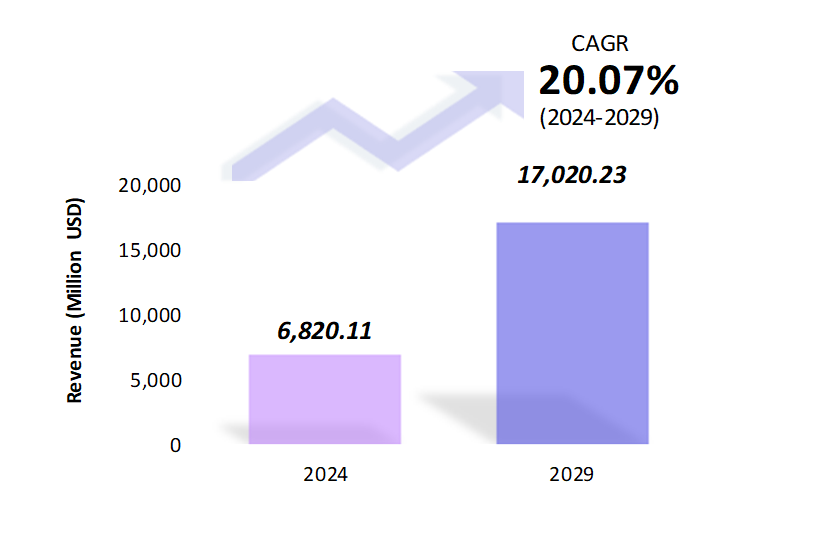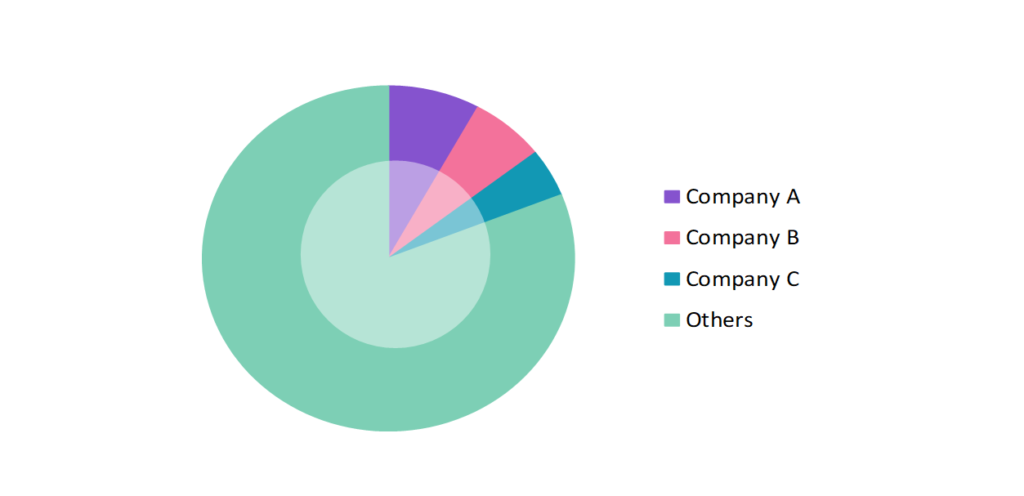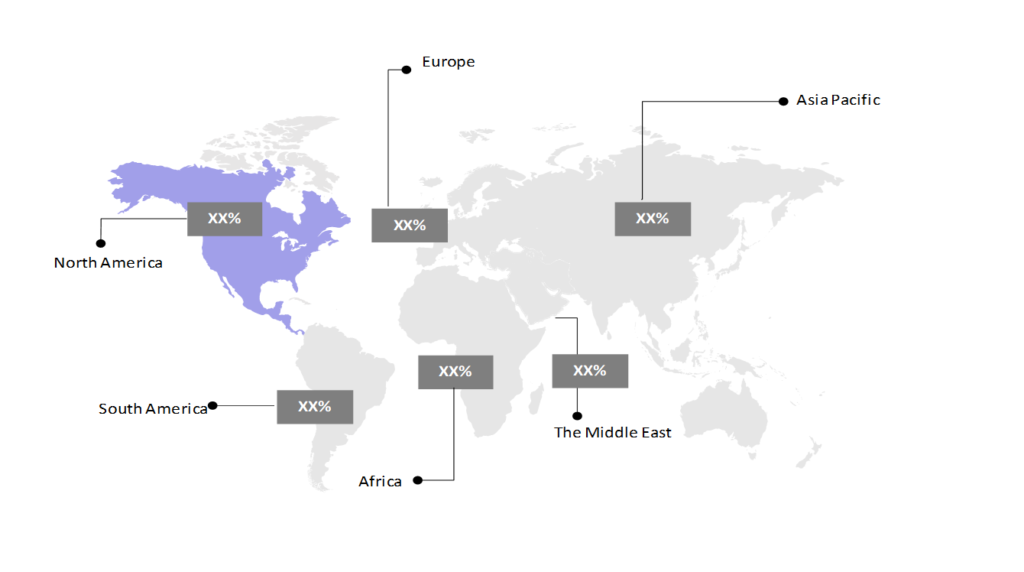Genome Editing Market Analysis: Growth, Size, Share & Future Trends (2024-2029)
The market report offers a detailed analysis segmented by Technology (Clustered Regularly Interspaced Short Palindromic Repeats CRISPR, Transcription Activator Talen, Zinc-finger Nucleases ZFN, Antisense, Others); by Application (Genetic Engineering, Diagnostic Application, Drug Discovery and Development, Others); by Method (Ex- Vivo, In- Vivo); by End User (Pharmaceutical and Biopharmaceutical Industry, Biotechnology Industry, CROs, Government Research Organizations); by Geography (North America, South America, Asia Pacific, Europe, The Middle East, Africa).
Outlook

- The genome editing market is estimated to be at USD 6,820.11 Mn in 2024 and is anticipated to reach USD 17,020.23 Mn in 2029.
- The genome editing market is registering a CAGR of 20.07% during the forecast period of 2024-2029.
- The genome editing market is rapidly expanding, driven by advancements in technologies like CRISPR, which offer unprecedented precision in genetic modifications. Increasing investments in biotechnology, rising demand for personalized medicine, and the potential for agricultural innovations are fueling market growth.
Request a free sample.
Ecosystem

- The participants in the global genome editing industry are always developing their strategies to preserve a competitive advantage.
- New players are emerging with alternative gene-editing approaches, such as base editing and prime editing. Companies like Beam Therapeutics and Prime Medicine are gaining traction by focusing on these next-generation technologies, which offer potentially greater precision and reduced off-target effects.
- Several important entities in the genome editing market include Merck & Co., Inc.; Cibus, Inc.; Thermo Fisher Scientific Inc.; Genscript Biotech Corp.; Sangamo Therapeutics, Inc; and others.
Ask for customization.
Findings
| Attributes | Values |
|---|---|
| Historical Period | 2018-2022 |
| Base Year | 2023 |
| Forecast Period | 2024-2029 |
| Market Size (2024) | USD 6,820.11 Mn |
| Market Size (2029) | USD 17,020.23 Mn |
| Growth Rate | 20.07% CAGR from 2024 to 2029 |
| Key Segments | Technology (CRISPR, Talen, ZFN, Antisense, Other); Application (Cell Line Engineering, Genetic Engineering, Diagnostic Application, Drug Discovery and Development, Others (Animal Genetic, Plant Genetic)); Method (Ex- Vivo, In- Vivo); End User (Pharmaceutical and Biopharmaceutical Industry, Biotechnology Industry, CROs, Government Research Organizations); Geography (North America, South America, Asia Pacific, Europe, The Middle East, Africa) |
| Key Vendors | Merck & Co., Inc.; Cibus, Inc.; Thermo Fisher Scientific Inc.; Genscript Biotech Corp.; Sangamo Therapeutics, Inc, |
| Key Countries | The U.S; Canada; Mexico; Brazil; Argentina; Colombia; Chile; China; India; Japan; South Korea; The UK; Germany; Italy; France; Spain; Turkey; UAE; Saudi Arabia; Egypt; South Africa |
| Largest Market | North America |
Get a free quote.
Trends
- Advanced Gene Therapies: Gene therapies utilizing advanced genomic editing techniques are rapidly emerging as transformative solutions for treating previously untreatable genetic disorders and rare diseases. These therapies are not only expanding the pipeline of clinical trials but are also catalyzing faster regulatory approvals, reflecting their potential to revolutionize healthcare.
- Increased Focus on Personalized Medicine: Advancements in genomic editing are enabling more personalized healthcare solutions. This trend is pushing the development of tailored therapies based on individual genetic profiles. By leveraging advanced genomic editing tools, researchers can create personalized treatments that target the root cause of diseases at the molecular level, leading to more precise, effective, and less invasive interventions.
- Genome Data Analysis: The integration of advanced genome data analysis is becoming a key trend in the genomic editing market. As the ability to sequence and interpret vast amounts of genetic data improves, researchers can better identify precise gene targets for editing.
Speak to analyst.
Catalysts
- Rising Government Funding and Genomic Projects: The genomic editing market is being propelled by increased government funding, fostering innovation and technological advancements. A surge in genomic research projects worldwide is further accelerating market expansion. The National Human Genome Research Institute (NHGRI) supports research through programs and projects that span six key domains, i.e., genomic structure and function, genomic technologies, genomic medicine, genomic data science, ethical, legal, and social implications (ELSI), and genomic education.
- Growing Application of Genomics: The expanding application of genomics in healthcare, agriculture, and biotechnology is significantly driving the genomic editing market. These advancements are enhancing precision medicine, gene therapy, and crop improvement.
- Introduction of CRISPR-Cas9: The introduction to CRISPR-Cas9 has revolutionized the genomic editing market, offering precise, efficient, and cost-effective gene-editing solutions. Its wide-ranging applications in disease treatment, agriculture, and biotechnology are significantly accelerating market growth and innovation in the field.
Inquire before buying.
Restraints
- Off-Target Effects of CRISPR Technology: The genome editing market faces a significant challenge due to CRISPR technology’s off-target effects, which can lead to unintended genetic mutations and safety concerns. These issues increase regulatory scrutiny, slow market adoption, and raise the cost of development, thereby impacting the growth potential of CRISPR-based therapies and products.
- Intellectual Property Disputes: Ongoing patent battles and intellectual property (IP) complexities surrounding CRISPR and other genome editing technologies create legal and financial uncertainties for companies. These disputes can stifle innovation by restricting access to critical technologies, increasing licensing costs, and deterring smaller companies or researchers from entering the market, ultimately slowing the overall advancement of the field.
- Technical Complexity and Delivery Challenges: Despite advances in genome editing technologies, effectively delivering these tools to the correct cells or tissues remains a significant technical hurdle. Ensuring precise targeting, minimizing immune responses, and achieving efficient delivery, particularly in complex organisms or specific tissues, are major challenges that can limit the success and scalability of genome editing applications in both research and therapeutic settings.
Personalize this research.
Hotspot

Explore purchase options.
Table of Contents
| 1. Introduction 1.1. Research Methodology 1.2. Scope of the Study 2. Market Overview / Executive Summary 2.1. Global Genome Editing Market (2018 – 2022) 2.2. Global Genome Editing Market (2023 – 2029) 3. Market Segmentation 3.1. Global Genome Editing Market by Technology 3.1.1. CRISPR 3.1.2. Talen 3.1.3. ZFN 3.1.4. Antisense 3.1.5. Other 3.2. Global Genome Editing Market by Application 3.2.1. Cell Line Engineering 3.2.2. Genetic Engineering 3.2.3. Diagnostic Application 3.2.4. Drug Discovery and Development 3.2.5. Others (Animal Genetic, Plant Genetic) 3.3. Global Genome Editing Market by Method 3.3.1. Ex-Vivo 3.3.2. In-Vivo 3.4. Global Genome Editing Market by End User 3.4.1. Pharmaceutical and Biopharmaceutical Industry 3.4.2. Biotechnology Industry 3.4.3. CROs 3.4.4. Government Research Organizations 4. Regional Segmentation 4.1. North America 4.1.1. The US 4.1.2. Canada 4.1.3. Mexico 4.2. South America 4.2.1. Brazil 4.2.2. Argentina 4.2.3. Colombia 4.2.4. Chile 4.2.5. Rest of South America 4.3. Asia Pacific 4.3.1. China 4.3.2. India 4.3.3. Japan 4.3.4. South Korea 4.3.5. Rest of Asia Pacific 4.4. Europe 4.4.1. The UK 4.4.2. Germany 4.4.3. Italy 4.4.4. France 4.4.5. Spain 4.4.6. Rest of Europe 4.5. The Middle East 4.5.1. Turkey 4.5.2. UAE 4.5.3. Saudi Arabia 4.5.4. Rest of the Middle East 4.6. Africa 4.6.1. Egypt 4.6.2. South Africa 4.6.3. Rest of Africa 5. Value Chain Analysis of the Global Genome Editing Market 6. Porter Five Forces Analysis 6.1. Threats of New Entrants 6.2. Threats of Substitutes 6.3. Bargaining Power of Buyers 6.4. Bargaining Power of Suppliers 6.5. Competition in the Industry 7. Trends, Drivers and Challenges Analysis 7.1. Market Trends 7.1.1. Market Trend 1 7.1.2. Market Trend 2 7.1.3. Market Trend 3 7.2. Market Drivers 7.2.1. Market Driver 1 7.2.2. Market Driver 2 7.2.3. Market Driver 3 7.3. Market Challenges 7.3.1. Market Challenge 1 7.3.2. Market Challenge 2 7.3.3. Market Challenge 3 8. Opportunities Analysis 8.1. Market Opportunity 1 8.2. Market Opportunity 2 8.3. Market Opportunity 3 9. Competitive Landscape 9.1. Merck & Co., Inc. 9.2. Cibus, Inc. 9.3. Thermo Fisher Scientific Inc. 9.4. Genscript Biotech Corp. 9.5. Sangamo Therapeutics, Inc, 9.6. Company 6 9.7. Company 7 9.8. Company 8 9.9. Company 9 9.10. Company 10 |
Know the research methodology.
Genome Editing Market – FAQs
1. What is the current size of the genome editing market?
Ans. In 2024, the genome editing market size is $6,820.11 Mn.
2. Who are the major vendors in the genome editing market?
Ans. The major vendors in the genome editing market are Merck & Co., Inc.; Cibus, Inc.; Thermo Fisher Scientific Inc.; Genscript Biotech Corp.; Sangamo Therapeutics, Inc.
3. Which segments are covered under the genome editing market segments analysis?
Ans. The genome editing market report offers in-depth insights into Technology, Application, Method, End User, and Geography.
